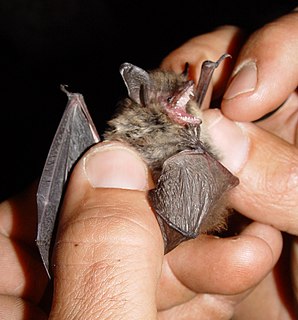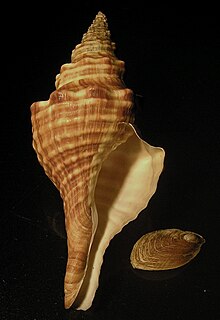
The mouse-eared bats are a diverse and widespread genus (Myotis) of bats within the family Vespertilionidae.

The genus Plecotus consists of the long-eared bats. Many species in the genus have only been described and recognized in recent years.

The Alpine long-eared bat or mountain long-eared bat is a species of long-eared bat. It was originally described from Switzerland and Austria as a species intermediate between the brown long-eared bat and the grey long-eared bat in 1965. It was later described in 2002, from France and Austria, respectively. Despite its name, this species is not restricted to the Alps, being found in Croatia, Bosnia and Herzegovina and elsewhere. It differs from other European long-eared bats, such as the brown long-eared bat, by its white underparts.

The desert long-eared bat is a species of vesper bat found in North Africa and the Middle East.
The Ethiopian big-eared bat or Ethiopian long-eared bat is a recently described species of long-eared bat in the family Vespertilionidae.
Myotinae is a subfamily of vesper bats. Submyotodon is the second extant genus included in the subfamily Myotinae. Before the description of Submyotodon and analysis of its phylogenetics, the only member of Myotinae was the genus Myotis.

The Vespertilioninae are a subfamily of vesper bats from the family Vespertilionidae.

Nyctophilus is a genus of the vespertilionids or vesper bats. They are often termed big-eared bats or long-eared bats, as the length of their ears often greatly exceeds that of the head. This genus occurs in the New Guinean-Australian region.

The Sardinian long-eared bat is a species of bat endemic to Sardinia, Italy.

Fusinus ocelliferus, common name the long-siphoned whelk, is a species of sea snail, a marine gastropod mollusk in the family Fasciolariidae, the spindle snails, the tulip snails and their allies.
In zoological nomenclature, emendations are alterations made to the spelling of taxon names. In bacteriological nomenclature, emendations are made to the circumscription of a taxon.
The Japanese long-eared bat is a species of vesper bat endemic to Japan, where it is found in Hokkaido, Honshu and Shikoku. It has distinctive, long ears, hence its Japanese name, the 'rabbit bat'. Formerly included as a subspecies of the European bat Plecotus auritus, genetic studies now indicate Plecotus sacrimontis is a separate species.

Kolombatovic's long-eared bat, also known as the Mediterranean long-eared bat, is a European species of bat found in the Balkans.
Ognev's long-eared bat is a species of bat found in Asia. By 2006, it was recognized as a separate species from the P. auritus species complex.
Plecotus ariel is a species of vesper bat. Only one individual has ever been documented, in China's Sichuan Province.
Plecotus homochrous, commonly called Hodgson's long-eared bat, is a species of bat in the family Vespertilionidae. It is endemic to the Indian subcontinent.









